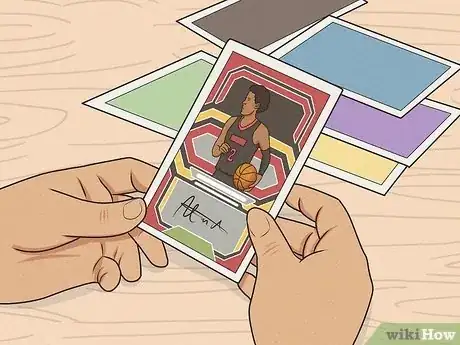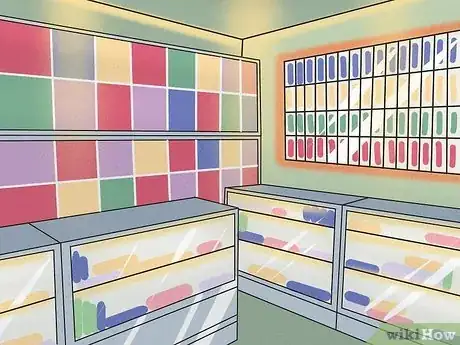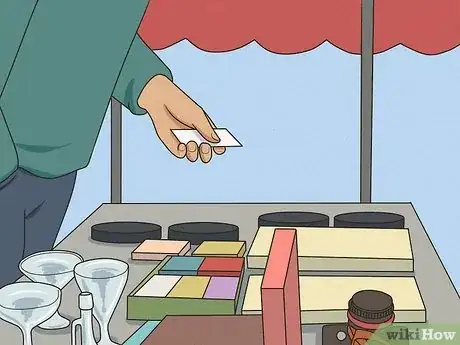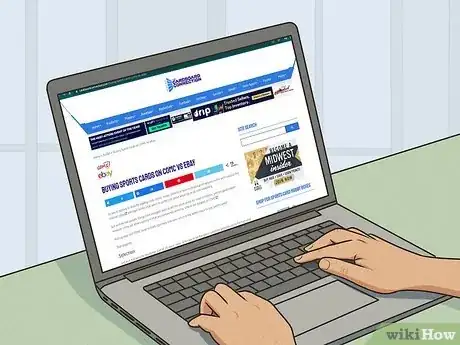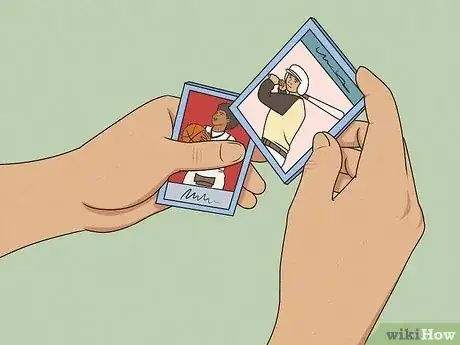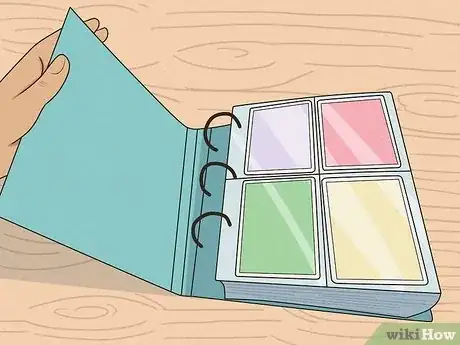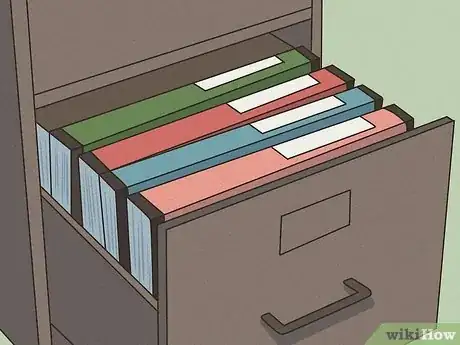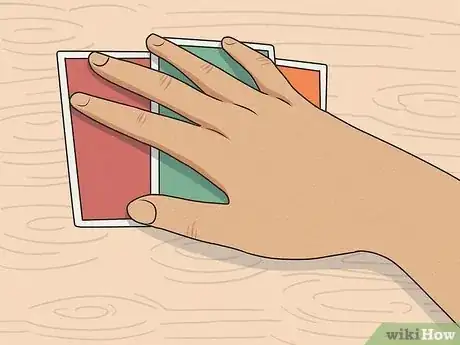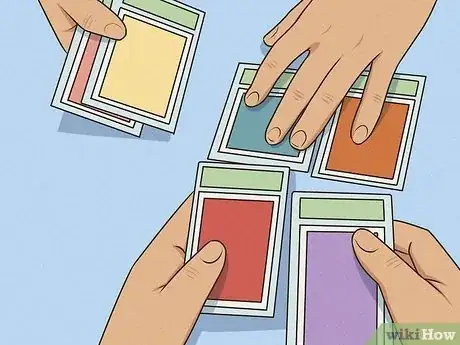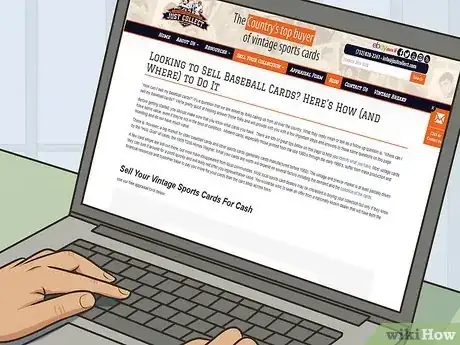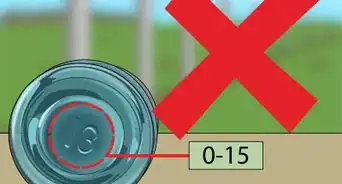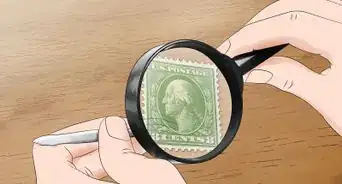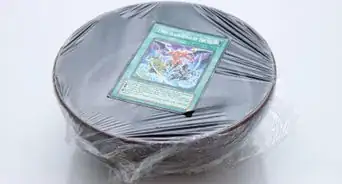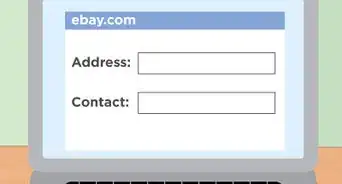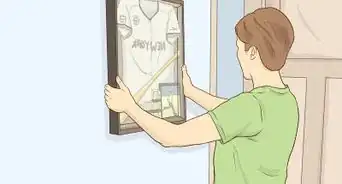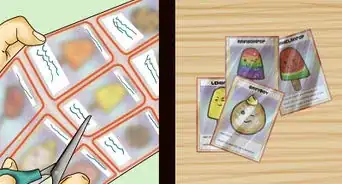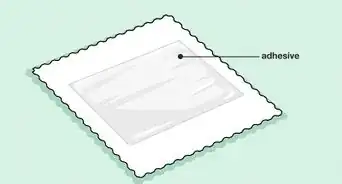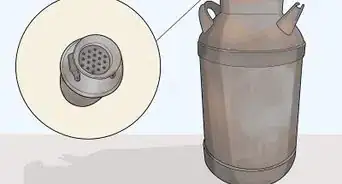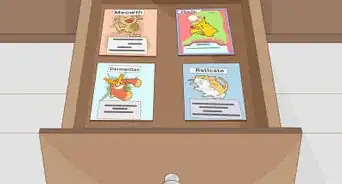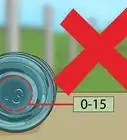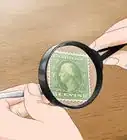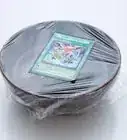This article was co-authored by wikiHow Staff. Our trained team of editors and researchers validate articles for accuracy and comprehensiveness. wikiHow's Content Management Team carefully monitors the work from our editorial staff to ensure that each article is backed by trusted research and meets our high quality standards.
There are 15 references cited in this article, which can be found at the bottom of the page.
This article has been viewed 15,022 times.
Learn more...
Collecting sports cards can be a fun (and potentially profitable) hobby. Start building your collection by keeping your eyes peeled for desirable cards at places like hobby shops, online stores, and trade shows. As you continue amassing cards, use plastic sleeves to protect them from dust, dirt, and damage, and keep them organized in a multi-page card binder until you’re ready to show them off or put them up for sale or trade.
Steps
Acquiring Cards for Your Collection
-
1Decide what type of cards you want to collect. Collectible cards exist for just about every sport imaginable, from football to hockey to pro wrestling. It can take decades to track down all the cards in a particular set, so narrowing the scope of your collection to one or two sports will help you focus your search.[1]
- Of course, you also have the option of collecting cards from several different sports.
- Once you’ve chosen one or more sports, expanding your collection will be a matter of seeking out cards from various sets until you’ve pieced them together.
-
2Search hobby shops for packs of new cards. Stores that sell comic books, toys, and board games also tend to carry sports cards. These places tend to mostly stock newer editions, which come randomized in sealed packs.
- You can pick up a pack of sport-specific cards at most hobby shops for around $3-5.
Advertisement -
3Look for vintage cards at pawn shops, flea markets, and garage sales. Anywhere people go to sell off of their unused belongings, you have a good chance of stumbling upon a stack of old sports cards. In fact, it’s not uncommon for rare and valuable cards to turn up in a jumble of assorted goods, often being sold for far less than they’re actually worth.[2]
- The cards you come across at garage sale table or thrift store may not be in the best condition, but they may be just the ones you need to round out an incomplete set.
-
4Purchase cards online. These days, there are many stores on the internet that specialize in new and antique trading cards. Check out the “Sports” section of a few of these websites to peruse their selection. Don’t forget to check sites like Ebay, Etsy, and COMC, as well.[3]
- One of the major advantages of buying cards online is that they tend to be better organized and catalogued, with more complete specs. You’ll also have the freedom to pick out cards individually.
- For the most part, the cards you find in online store are for sale only, though you might run into a vendor every now and then who’s interested in trading.
- You may have to visit several different sites to find the cards you’re looking for.
-
5Attend trade shows in your area. Keep an eye out for sponsored conventions and less formal gatherings aimed at sports cards collectors. These gatherings can be a great place to hunt for cards that have long eluded you. Rare and valuable cards in particular tend to turn up at trade shows more often than anywhere else.[4]
- If you live in the U.S., use Beckett’s online Venue Manager search engine to find out whether there are any upcoming trade shows taking place near you.[5]
- Even if you don’t go home with anything new, sports cards conventions can provide you with an opportunity to learn more about hot trade commodities and what makes them so prized.
Keeping Your Cards in Good Condition
-
1Keep your cards in plastic card sleeves. Slip the cards into the sleeves, then secure the fold-down tops with a small strip of tape. The plastic will protect your cards from dust, dirt, and moisture, as well as fading, scratches, and other minor wear and tear. Card sleeves are a must-have for any serious collector.
- It’s a good idea to sleeve all the cards in your collection, not just the most expensive ones—you never know what a certain card is going to be worth someday.
- Card sleeves are useful for preventing minor damage, but your cards will still be vulnerable to being bent. For more heavy-duty protection, upgrade to rigid plastic toploaders or screw-down holders instead.[6]
-
2Use a card binder to organize your collection. After placing your cards in sleeves, simply slide them into the pockets of the binder. There, they’ll be arranged in neat columns and rows, which will help you find the ones your looking for without difficulty. Card binders also make it easier to transport your collection from place to place, since they keep all your cards together.[7]
- An inexpensive card binder will typically hold at least 300-400 cards.
- Feel free to arrange your cards by number, value, series, or any other attribute you choose.
-
3Store your cards in a cool, dry, dark place. Once you’ve got your cards enveloped in plastic sleeves and organized in a card binder, find a secure spot for them inside a desk drawer or filing cabinet or on the upper shelf of your closet. There, they’ll be safely insulated from light and moisture, which can wreak havoc on paper cards.[8]
- If you’re worried about the condition of your cards, consider tucking them away inside a lidded container.
- Prolonged exposure to sunlight or humidity could cause your cards to fade, wrinkle, or smudge. This type of wear and tear can significantly lower their value.
-
4Avoid letting other people handle your cards. Every now and then, you may get the urge to take your cards out to show them off. When you do, however, it’s best to hold onto them yourself rather than passing them around. It’s easy for cards in soft sleeves to become bent or smudged if the recipient isn’t being careful.
- It’s generally a bad idea to loan out your cards, especially to someone you don’t know well.
Selling and Trading Sports Cards
-
1Use a price guide to find out how much your cards are worth. To determine the value of a given card, consult an up-to-date price guide like the one offered by Sports Collectors Digest. Price guides don’t just offer projected dollar amounts for individual cards, they also list each and every card released as part of a set, which make them useful for tracking the progress of your collection.[9]
- SMR Online is currently the only official online price guide for PSA-certified sports cards. The site feature listings for baseball, basketball, football, hockey, tennis, and even boxing, golf, and racing.[10]
- You may also be able to get an idea of how much a certain card is worth by taking an average of the asking prices of similar listings on sites like Ebay.[11]
-
2Offer your cards to a hobby shop. Many hobby shops and stores specializing in sports memorabilia take consignments from customers who have something they want. One of these places may pay you handsomely for a handful of vintage cards, especially if they're rare or in high-demand.[12]
- Call a few shops in your area to see which ones accept trade-ins or buy-backs.
- One advantage of taking your cards into a brick-and-mortar shop is that it gives you a chance to haggle on the price. Ultimately, this may allow you to get a better deal than you could by trying to match other sellers' prices online.
-
3Put your cards up for sale online. Register for an account on an e-commerce site like Ebay or Etsy. You can then create listings for the cards you’re looking to sell. Price your cards according to the values given in your trusty price guide, or lower them slightly to compete with other sellers.[13]
- When creating a listing, be sure to include all the information fellow collectors need to evaluate the quality of the card, such as the player, card number, year, set name, and serial number.
- Some online card vendors also buy cards off independent collectors to increase their stock.[14]
-
4Trade your unwanted cards for better ones. If you encounter another collector who has a card you’ve had your eye on for a while, see if they would be willing to let go of it in exchange for something of yours. Trading is a popular alternative to buying and selling in the world of sports memorabilia. You’re essentially using the value of your cards as currency to make transactions.[15]
- In some cases, you may have to give up multiple cards of slightly lesser value in order to score one prized collector’s item.
- Always inspect the cards you’re after for quality and authenticity before you commit to trading.[16]
-
5Unload large quantities of cards at a pawn shop. If you're in a hurry to get rid of a mass of unwanted cards, gather them up and drop them off in bulk at a pawn shop or secondhand store. You may not get much for them, but a few bucks is better than nothing, especially if they've just been sitting around in your attic for years.[17]
- If you decide you don't want to part with your cards after all, you'll have a small window of time during which you can return the money your received and get them back.
Things You’ll Need
- Plastic card sleeves
- Card binder
- Binder sheets
- Trading card price guide
- Hard plastic toploaders or screw-down holders or 1 touch magnetic (optional)
- Lidded storage container (optional)
References
- ↑ https://www.psacard.com/smrpriceguide/
- ↑ http://www.justcollect.com/blog/unexpected-places-to-find-antique-sports-cards/
- ↑ https://www.cardboardconnection.com/buying-sports-cards-comc-vs-ebay
- ↑ https://www.forbes.com/sites/davidseideman/2014/03/24/how-to-build-a-world-class-sports-memorabilia-collection-from-scratch/#2ebe201d11ed
- ↑ https://www.beckett.com/venue_manager
- ↑ http://www.vintagegradedbaseballcards.com/best-way-to-store-vintage-baseball-cards/
- ↑ https://www.cardboardconnection.com/collecting-101/how-should-i-store-my-sports-cards
- ↑ https://www.cardboardconnection.com/collecting-101/how-should-i-store-my-sports-cards
- ↑ http://upperdeckblog.com/2011/11/what-are-my-upper-deck-sports-cards-worth/
- ↑ https://www.psacard.com/smrpriceguide/
- ↑ https://www.cardboardconnection.com/what-are-my-sports-cards-worth-using-ebay-to-find-the-value-of-your-collection
- ↑ https://www.sportscollectorsdaily.com/can-sell-baseball-cards/
- ↑ http://www.justcollect.com/sell-your-baseball-card-collection/
- ↑ https://www.cardboardconnection.com/10-new-years-resolutions-card-collectors
- ↑ https://www.psacard.com/articles/articleview/6315/ten-tips-building-collection
- ↑ https://parade.com/298427/michaelosacky/how-can-you-tell-if-a-baseball-card-is-authentic/
- ↑ https://blog.pawnguru.com/baseball-cards-pawn/
